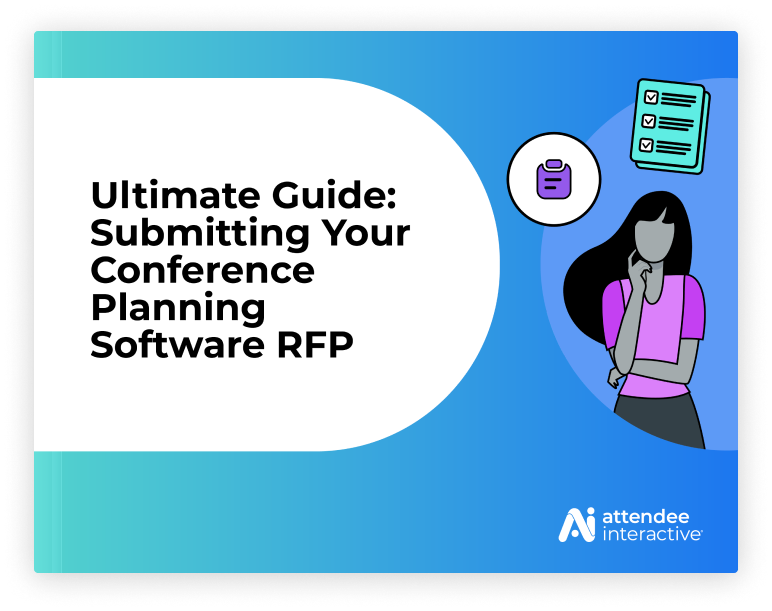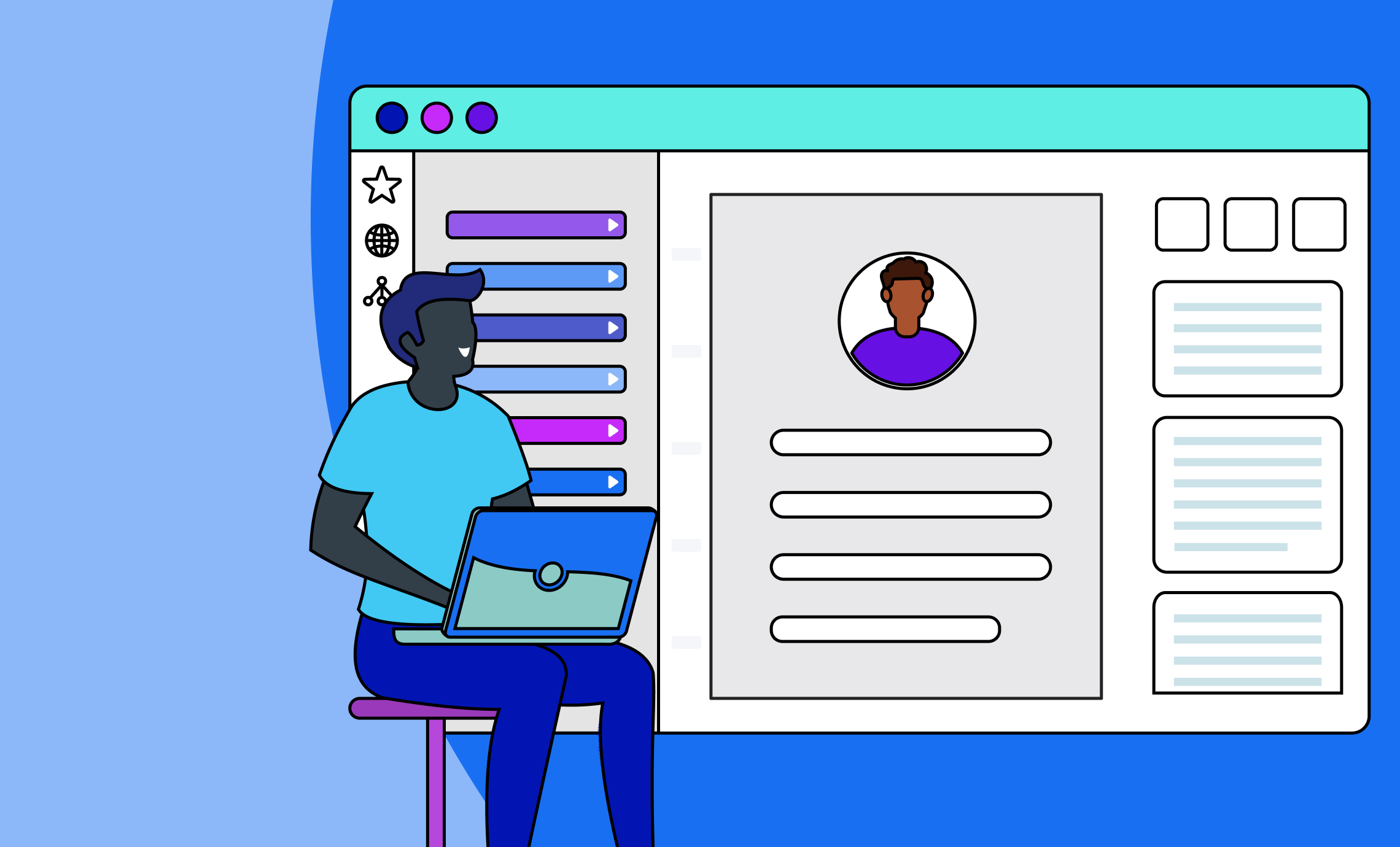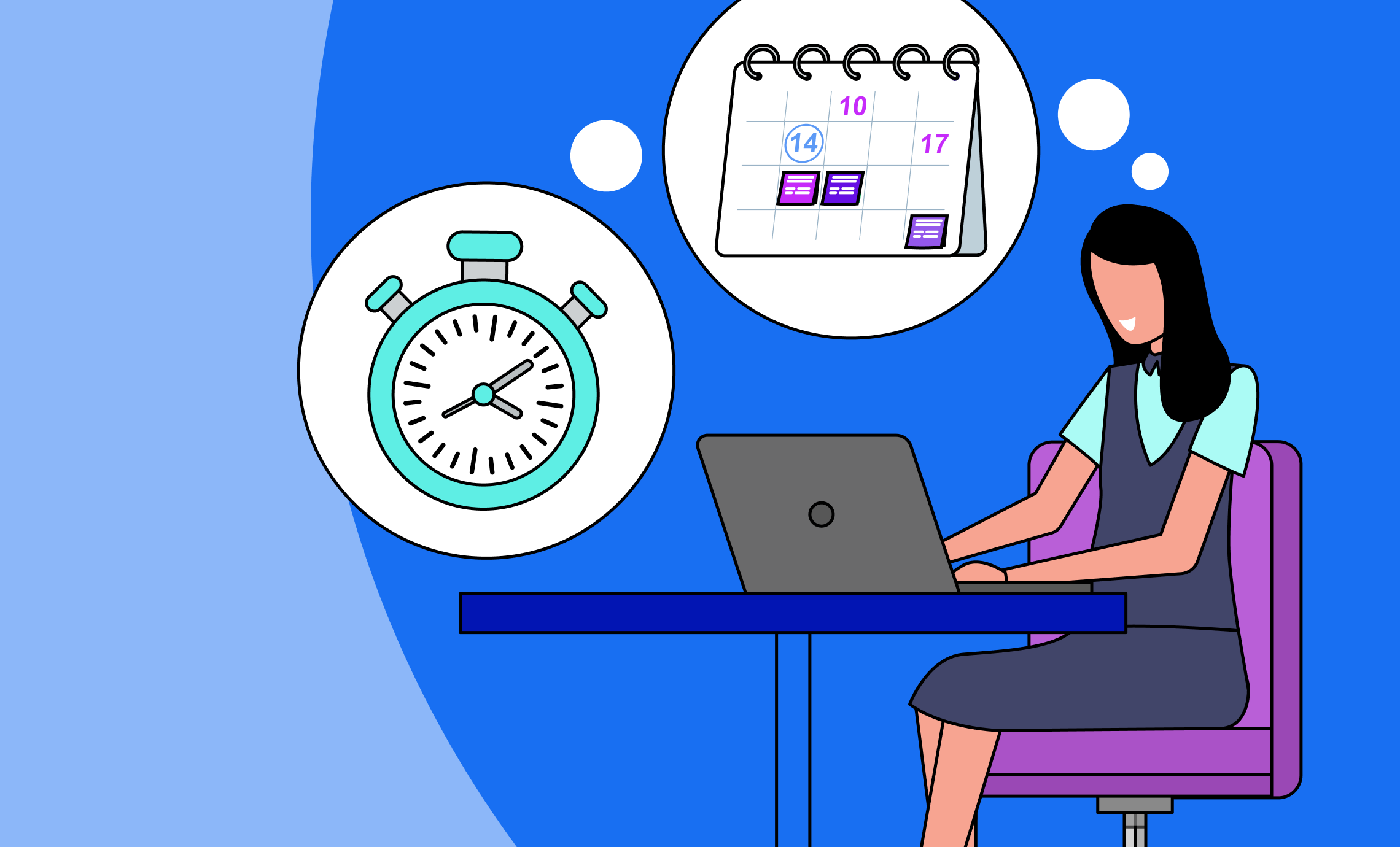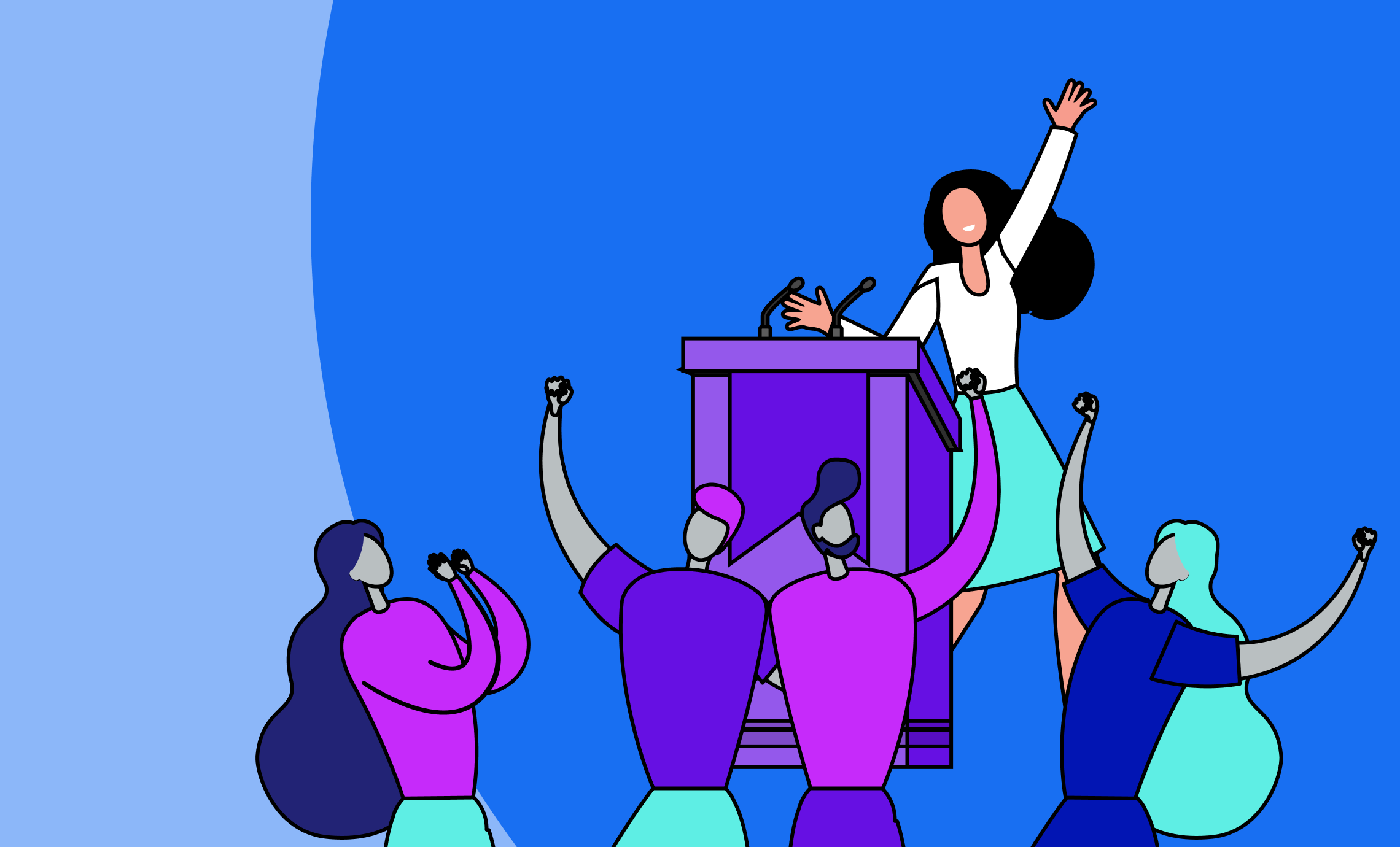As you know, a Call for Proposals (CFP) invites speakers to submit their ideas, which will hopefully enrich your events with diverse, engaging sessions. A simple concept, certainly; however, reaching potential speakers effectively requires a series of carefully crafted emails, each with a distinct purpose, to guide them through the proposal process.
From capturing initial interest to confirming selections, each CFP email should help foster engagement, increase submissions, and strengthen connections with speakers.
So, what are the best types of CFP emails to send and what should they include?
We’ve seen the following types of CFP emails prove effective for event organizers who are eager to nurture an impactful and seamless experience. Consider using each section like a step-by-step mini guide to help you craft engaging emails that align the right speakers with your event.
The Initial Call for Proposals Email
Your first opportunity to spark interest among potential speakers, a well-crafted CFP email should inspire speakers to consider your event as a valuable platform to share their expertise. Yes, it’s your event but you’ve set the stage (quite literally) for them to steal the show for however long their session lasts. Your initial opportunity to engage them is their opportunity to engage and connect with a wider audience.
Be sure to include the following elements in your initial CFP email in order to connect with the kinds of speakers that will elevate your event programming.
Key Elements
- Engaging Subject Line: Start strong with an inviting subject line, such as, “Share Your Expertise at [Event Name] – Submit Your Proposal!”
- Introduction to the Event: Provide a brief overview of the event’s purpose, focus areas, and the kind of audience it attracts. This helps speakers determine if their topics align with the event’s goals.
- Submission Guidelines: Include essential details like topics, deadlines, and submission formats, linking directly to your submission portal for convenience.
- Clear CTA: Encourage speakers to submit their proposals by highlighting how they’ll gain exposure, connect with other industry experts, and make an impact.
Speaker Perspective
Speakers look for events that will expand their reach and influence. Emphasize the professional benefits, such as networking opportunities, industry recognition, and audience engagement, to help them see the value of participating. Remember, popular speakers are invited to speak at many events, so your job is to make yours stand out as a can’t-miss opportunity for them to reach a wider audience. In order to do that, you need to focus on what’s in it for them.
The Reminder Email Before the Submission Deadline
Again, these are busy people with booked calendars — they could use a reminder about your submission deadline. Useful to them in a practical sense, a reminder email serves another purpose by creating a sense of urgency that encourages action among those who may still be deciding.
Give a gentle, yet effective nudge by incorporating the following components into your reminder email…
Key Elements
- Action-Oriented Subject Line: Use an urgent subject line like, “Last Chance! Submit Your Proposal for [Event Name] by [Deadline].”
- Deadline Reminder and Opportunity: Emphasize the upcoming deadline, reiterating the chance to present at the event.
- Key Details Recap: Provide a quick summary of submission requirements and the event’s highlights.
- CTA: Prompt speakers to finalize their submissions with a direct CTA.
Speaker Perspective
In most cases, these busy speakers have the best intentions of submitting but need a timely reminder to prioritize it. You know what they say about best intentions. Emphasizing urgency helps them make a decision and ensures your event stays on their radar. Keep them on your timeline while keeping your event top of mind.
The Extended Deadline Email
Harkening back to those good intentions, life happens, and sometimes deadlines need to be adjusted. Extending the deadline can provide a helpful buffer for those interested but short on time, without compromising on the quality of submissions. It’s worth the effort to extend your deadline once in order to connect with the caliber of speakers who will matter most to your event attendees.
Focus on friendly and forthright content in these emails, similar to the following sample:
Key Elements
- Encouraging Subject Line: Try a friendly tone with, “Good News! Submission Deadline Extended for [Event Name].”
- Reason for the Extension: Briefly explain why the deadline is extended, reinforcing that their participation is valued.
- New Deadline & Guidelines: Make the new deadline clear, and restate submission guidelines to help potential speakers stay informed.
- CTA: Encourage immediate action with a direct link to submit.
Speaker Perspective
Put yourself in the shoes of these speakers. Wouldn’t you appreciate extra time, especially when balancing multiple responsibilities? You’re an event organizer, of course you would. While an extension provides flexibility, keep the tone positive and remind speakers that this is a unique opportunity that still holds value.
The Targeted Call for Proposals Email
Moving to more personalized email content, reach out to key speakers who haven’t yet submitted via a targeted call for proposals email that shows you really know who they are and what they can provide for your event. Tailoring your message to acknowledge their unique expertise signals that you value their contributions and view them as an asset.
Isolate important details about their resume or experience and craft your email around them.
Key Elements
- Personalized Subject Line: Use the speaker’s name in the subject line to catch their attention, such as, “We’d Love to Hear from You, [Speaker Name]!”
- Direct Acknowledgment: Reference their expertise and explain how it aligns with the event’s themes or goals.
- Value Reinforcement: Emphasize the benefits they bring to the event and the professional advantages they’ll gain by participating.
- Convenient Link to Submit: Simplify the process by linking directly to the submission portal.
Speaker Perspective
If a speaker is on the fence about submitting a proposal, a personal invitation can help them feel appreciated and confident. Acknowledging their specific skills and expertise validates their contributions, which can be enough to encourage them to submit a proposal.
The Thank You and Next Steps Email
Once proposals have been submitted, acknowledge receipt with a courteous and informative follow-up. This email serves two purposes: the first, is the simple reassurance to speakers that their submissions are in review; the second is to maintain their interest and engagement.
Clarity about what follows their submission is important, so be sure to include your own variations of the following:
Key Elements
- Grateful Subject Line: A simple, genuine subject line like, “Thank You for Submitting Your Proposal for [Event Name].”
- Receipt Confirmation: Clearly state that their submission has been received and is under review.
- Review Timeline: Provide an overview of the timeline for the review process and when they can expect to hear back.
- Overview of Next Steps: Explain any additional steps they should anticipate, such as potential interviews or additional materials.
Speaker Perspective
Transparency builds trust. A clear understanding of what happens next helps speakers feel respected and keeps them connected to your event, increasing the likelihood that they’ll remain involved.
The Speaker Selection Announcement Email
Notifying speakers of their selection is one of the most important CFP emails. It’s a pivotal moment that recognizes their efforts and sets the stage for a successful event.
Key Elements
- Celebratory Subject Line: Convey excitement with a subject line like, “You’ve Been Selected to Speak at [Event Name]!”
- Confirmation of Selection: Congratulate them and briefly summarize their session details.
- Preparation Next Steps: Include key deadlines for presentation preparation, any required materials, and details on how they can access the speaker management portal if available.
- Resource Links: If applicable, link to tools and resources for session preparation, such as branding guidelines or technical requirements.
Speaker Perspective
This moment is crucial for speakers, who are likely feeling both excited and anxious. Offering clear instructions and accessible resources helps reduce uncertainty, allowing them to focus on delivering a great presentation.
Attract the Right Speakers with Attendee Interactive
An effective CFP email strategy doesn’t just guide speakers through the submission process—it fosters a meaningful connection that inspires them to participate and engage fully. Thoughtfully crafted emails not only attract high-quality proposals but also enhance speakers’ confidence and commitment. By making your emails clear, timely, and personalized, you create a streamlined experience that benefits both your event and your speakers.
Our Ultimate Guide to Submitting Your Conference Planning Software RFP includes a comprehensive look at understanding conference planning software, key features to look for, how to choose the right platform, along with implementation and integration.
For those looking to simplify their CFP email process, consider conference planning tools like Attendee Interactive to manage submissions, communications, and speaker engagement. A centralized system makes it easier for event organizers, while elevating the experience for speakers from start to finish. Request a demo!



